
Categories
Resource Types
CCSS
Speaking & Listening
Language
Reading
Attributes All in Good Time
$ 295
Measuring the passage of time is a subjective perception. Although the length of a day is measured at 24 hours, sometimes it seems to fly by while at other times it creeps. Use these activities to he
...
lp students understand time. Activities include estimating how much time to do a specific task, measuring having enough time to do a task, finding words that indicate time in reading passages, and word scramble using time associated words.
BUNDLE - Attributes
$ 795
This instructional bundle contains 7 worksheet packets and the CALI assessment for student attribute knowledge. Topics are: Introduction (0881), color (0882), composition (0883), decription (0884), em
...
otions (0885), size words (0886), temperature (0887), time (0888), and review (0889). Includes CALI assessment (0777).
Science specific language - Instructional Stategy- Composition of matter
$ 195
In examining students’ writing samples, there is often a lack of description related to the aspects of composition. For example, most students are familiar with and describe color, shape, size, and lo
...
location but what something is made of is frequently left out. Using the periodic table and understanding chemical elements can support the awareness of composition. Use of this knowledge can expand descriptive writing. These instructional strategies and activities can be used across the curriculum to reinforce understanding of elements and how they relate to everyday life. Activities include matching elements to every day objects, creating a class periodic table, student research, and how elements are used to produce fireworks.
Science specific language - Instructional Strategy - The Sequence of Changes in Matter
$ 195
Changes in the state of matter are physical changes, not chemical changes. When a substance moves from one phase to another it is still the same substance. These instructional strategies and activitie
...
s can be used to introduce or reinforce states of matter. Activities include sentence completion, categorization, finding text evidence, and using critical thinking.
Science specific language - Literacy Instruction - Time Measurement
$ 195
Scientific study is the observation and measurement of change. Use these instructional strategies to teach students the basic scientific units of time (standard and metric). Activities include exami
...
ning root parts such as "chrono," " -ology," reading comprehension and critical thinking, and ideas for extension lessons and student research.
Science specific language - Literacy Instruction - The Value of Science
$ 195
The
word ‘science’ comes from the Latin word for knowledge – scientia.
According to the Merriam -
Webster dictionary it is ‘knowledge about or study of the natural world based
on fac
...
on facts learned through
experiments and observation.” It is systematic, intellectual, and
practical.
Frequently, the instructional model for children who are deaf or hard of
hearing concentrates on language development and science learning is
considered to be extra. This
instructional material includes a lesson on SOUND as a means to exemplify a science instructional
strategy
Science specific language - Literacy Instruction - Visualization in Science
$ 195
What is ‘visualization’ in science? Scientific research uses the words ’visualization’, ‘image’, ‘visual aid’, and ‘visual literacy’ interchangeably. The term ‘visualization’ is defined as the formati
...
s defined as the formation of mental images and as the process of interpreting information in visual terms. It assists with the explaining, developing, and learning of concepts. These instructional strategies and activities will help you help your students with concepts across the curriculum.
BUNDLE - Science Specific Language
$ 795
This BUNDLE of instructional materials for teaching science concepts includes teaching packets on the science of colors, rainbows, asking questions, classifying living things, scientific elements, sta
...
tes of matter, time measures, visualization, and the value of science.
Language - Syntax Grammar - Forming Sentences
$ 295
For children who are deaf or hard of hearing, it is important to develop the awareness of what a complete thought consists of and to use it consistently in communication. Problems occur when a listene
...
r only hears a portion of what is said or only focuses on key words to comprehend what is said. The completeness of the speaker’s thought can be missed and this can result in poor communication or misunderstanding. Instructional strategies and activities include making sentences, word association, subject/predicate identification; sentence practice for beginning, intermediate, and advanced writers.
Language - Adjectives: Tell me about it!
$ 495
Describes how adjectives help us more clearly visualize the person, place or thing being described. Includes activities, book suggestions, and 9 worksheets to develop use of adjectives in speech and w
...
riting. Worksheets include: adjective picture cards for pre-k and K-1; color and describe a chair; using comparative and superlative adjectives; create an adjective bank; using cumulative and coordinate adjectives for advanced readersGives an adjective rubric and sample IEP goals.
You Viewed Recently

 Your browser is out of date. For best experience switch to latest updated Browser.
Your browser is out of date. For best experience switch to latest updated Browser.
 Get Chrome
Get Chrome Get Edge
Get Edge Get Firefox
Get Firefox
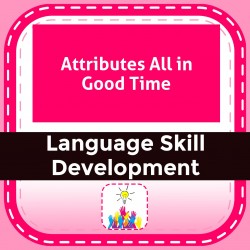
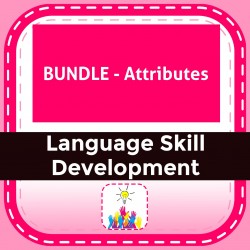
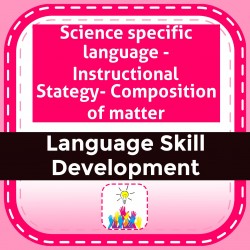
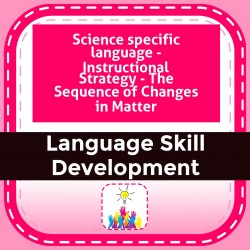
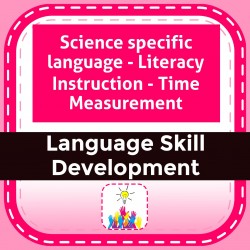
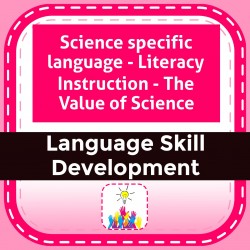
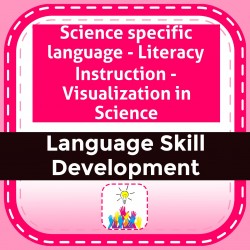
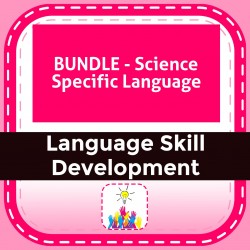
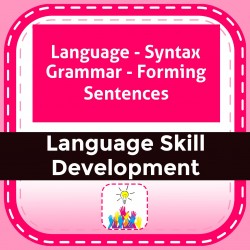
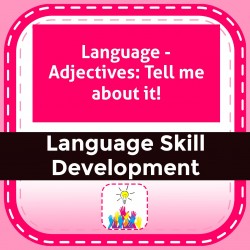
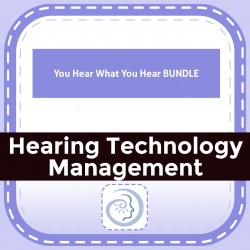


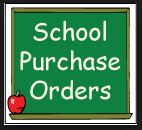 You MUST include an email contact and phone number on your PO. Some of our products are downloadable only and delivered via email. Not including an email address will prevent delivery.
You MUST include an email contact and phone number on your PO. Some of our products are downloadable only and delivered via email. Not including an email address will prevent delivery. 